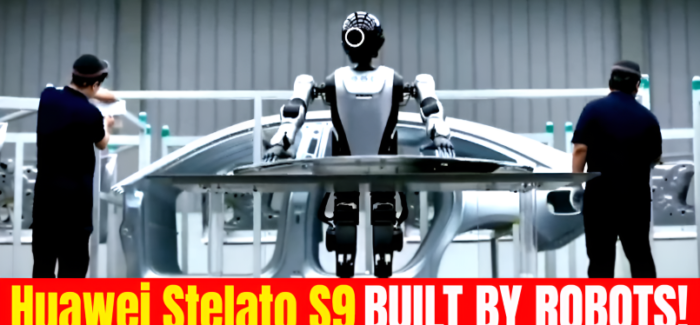Inside Huawei’s Robot-Powered Super Factory: The Stelato S9 Is Here
When it comes to redefining the future of luxury vehicles, Huawei is not just stepping into the game—it is aiming to change the rules entirely. The Stelato S9, developed in partnership with BAIC, is more than just another high-end electric sedan. It represents a complete shift in how vehicles are built, blending cutting-edge robotics with Huawei’s intelligent technology to deliver something genuinely unique in the electric vehicle market.
At the heart of this innovation is the Stelato Super Factory, located in Beijing. The facility stands out not just for its scale, but for the level of precision it offers. With more than 2 billion yuan invested into its creation, the factory is equipped with some of the most advanced robotics systems currently used in automotive production. One of the key machines is the Titan 1 robot, which is capable of welds and seal applications with accuracy as fine as ±0.06 millimeters. That is the kind of precision typically reserved for submarines or aircraft fuselage construction—not cars.
But that is not where the story ends. Every major part of the Stelato S9, from the body panels to the undercarriage, is crafted using ultra-accurate stamping lines that deliver results in as little as 3.75 seconds per component. These robotic systems guarantee uniformity, which translates to fewer defects, tighter panel gaps, and a more luxurious final product. And it all happens with minimal human intervention, showing just how far automation has evolved in the vehicle manufacturing world.
The sealing process also deserves a mention. Rather than relying on manual labor, the robots apply industrial-strength adhesives and sealants using submarine-grade techniques. The benefit? An incredibly stiff body structure that resists noise, vibration, and harshness—essential traits for any vehicle that aims to compete with names like Mercedes-Benz and BMW in the premium segment.
Inside the Stelato S9, the experience is equally refined. HarmonyOS takes care of the infotainment system, offering seamless integration across smart devices, while Huawei’s ADS 3.0 handles advanced driving assistance. You are not just getting a car; you are getting a tech ecosystem on wheels.
What is truly exciting is how this approach could shape the future of automotive production. By relying on intelligent robots to perform tasks with consistent quality and speed, manufacturers like Huawei and BAIC are proving that you can achieve both precision and efficiency at scale. That could mean lower costs, higher reliability, and faster production timelines for the next generation of electric vehicles.
This kind of transformation does not just happen overnight. It takes vision, investment, and trust in new technology. But if the Stelato S9 is anything to go by, Huawei and BAIC are not just building cars—they are building the future of mobility. And it is a future built by robots, guided by intelligent software, and aimed directly at the top of the luxury market.


Submit a Comment